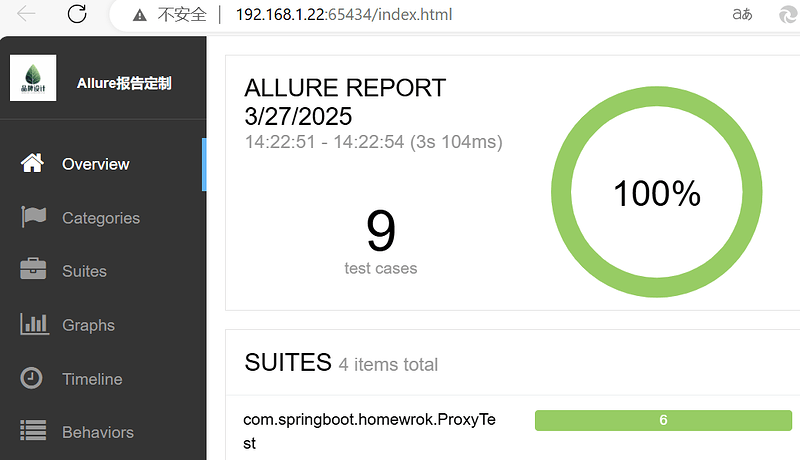Allure2报告定制化的应用场景
在实际测试过程中,针对不同的项目可能需要对测试报告展示的效果进行定制,比如修改页面的 logo、修改项目的标题或者添加一些定制的功能等等,Allure 为用户提供了方便的定制化方法。
## 定制页面 Logo
1.修改allure.yml,添加logo插件 - custom-logo-plugin( 在 allure 安装路径下,可以通过 where allure 或者which allure 查看 allure 安装路径)
plugins:
- junit-xml-plugin
- xunit-xml-plugin
- trx-plugin
- behaviors-plugin
- packages-plugin
- screen-diff-plugin
- xctest-plugin
- jira-plugin
- xray-plugin
- custom-logo-plugin
2.编辑styles.css文件(目录一般是在 ..\allure-2.32.0\plugins\custom-logo-plugin\static)
.side-nav__brand {
background: url("logo.png") no-repeat left center !important;
margin-left: 10px;
height: 40px;
background-size: contain !important;
}
定制页面标题
编辑styles.css 文件,添加修改标题对应的代码
/* 去掉图片后边 allure 文本 */
.side-nav__brand-text {
display: none;
}
/* 设置logo 后面的字体样式与字体大小 */
.side-nav__brand:after {
content: "Allure报告定制";
margin-left: 18px;
height: 20px;
font-family: Arial;
font-size: 12px;
}
在IDEA使用新样式运行生成allure报告和查看的步骤:
1.mvn 命令运行测试用例文件 mvn clean test
2.将target目录下生成的allure-results生成allure-report 到同目录下
allure generate target/allure-results -o ./allure-report --clean
3.打开allure-report: allure open allure-report
最终效果展示

